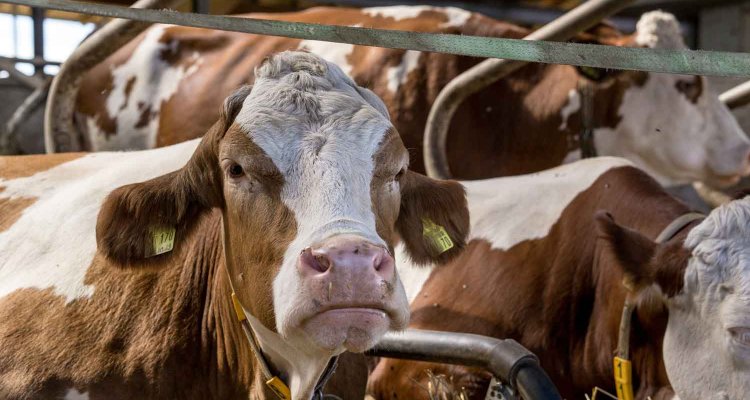
News
Greenhouse gas mitigation options in dairy and beef
The Dairy Working Group from the Sustainable Agriculture Initiative Platform (SAI Platform) and the European Roundtable for Beef Sustainability have commissioned Wageningen University & Research to make an overview of greenhouse gas mitigation (GHG) options in beef and dairy and their degree of implementation.
A literature review was conducted to identify the mitigation options. The degree of implementation was assessed by means of a survey that was distributed among the networks of the Dairy Working Group, the European Roundtable for Beef Sustainability and the International Dairy Federation. In the second part of the assignment a literature review was conducted on the environmental impact of beef and leather production systems in Europe.
28 GHG mitigations options identified
Based on the literature review, 28 GHG mitigation were identified in 5 categories:
- Genetics, breeding and enteric methane reduction
- Herd management
- Feed production, grassland management and land use
- Manure management
- Smarter energy management/use
In the report the following elements are listed for each mitigation option: a practical description of the option, a qualitative estimation of the GHG-reduction potential, the scientific background, the required skills for implementation, profitability, relevant farming system, stimuli to implement and consequences of implementation. The content is based on the literature review and the results of the conducted survey.
Survey: mitigation options are mainly aiming at improving efficiency and productivity
Sixty-seven respondents filled out the survey (50 dairy, 17 beef). They were mainly processors and representatives from national programmes. A majority (63%) indicated that all or some of the supplying farmers know about their individual carbon footprint.
A large number of different tools are being used to calculate carbon footprint on farm level, especially in the dairy sector. Also, within countries different tools are used. A majority of the respondents (76% dairy, 66% beef) had some kind of a GHG emissions monitoring plan of their supplying farmers in place. A top 10 of implemented mitigation options are listed in the table below. This includes results from the survey on relevance for farming system, profitability, required level of skills and main stimuli.
Overall findings
GHG emissions on beef and dairy farms are complex, beware to simplify. GHG emissions on dairy and beef farms result from different sources and processes inside and outside the farm. The effect of one mitigation option can differ considerably between different farming systems: ‘It is an immense challenge for farmers to understand the complex interaction (...) and to implement reliably,’ as one respondent mentioned in the survey. The large number of available mitigation options in combination with the great variety in farming systems makes it impossible to simplify the results of the survey. It is not possible to make a top 5 list with easy to apply mitigation options that will result in a major reduction of GHG emissions on all farms.
Currently implemented mitigation options focus mainly on efficiency and productivity. It makes sense that these mitigation options are currently implemented. This is because in general these mitigation options also have a positive impact on profitability: ‘Farms are making improvements to impact bottom line economics rather than reduce GHG emissions currently.’ The GHG reduction potential of these mitigation options is the highest for low productive farming systems and is relatively low for high productive and input-intensive farming systems.
It is a major challenge to motivate farmers to implement GHG mitigation options. This was indicated by several respondents. For many farmers the current drive to implement mitigation options will not be the reduction of GHG emission itself but improving the economic performance of the farm.
Two things have to be done to increase the level of implementation mitigation options:
- Create clarity in what farmers can do specifically for their own situation and farming system: which options or best practices are available and fitting.
- Create incentives and organise interventions to assure the implementation of these best practices.
A large number of different farm level tools is being used: alignment is recommended.
The survey results show that a large number of different tools are used to calculate farm-level carbon footprints, especially for dairy. In itself this is very positive: it helps in creating awareness and can be a starting point for communication and for mitigation. Chances are however, that the tools might differ in scope, in methodology or in granularity. This can be very confusing, especially if different tools are used within one country.
A final recommendation: It would be very useful to collect learnings from experiences and use these/them to make an overview of incentives and interventions that help to adopt practices that reduce GHG emissions. These learnings can be taken from members of networks like SAI Platform’s Dairy Working Group and the European Roundtable for Beef Sustainability.